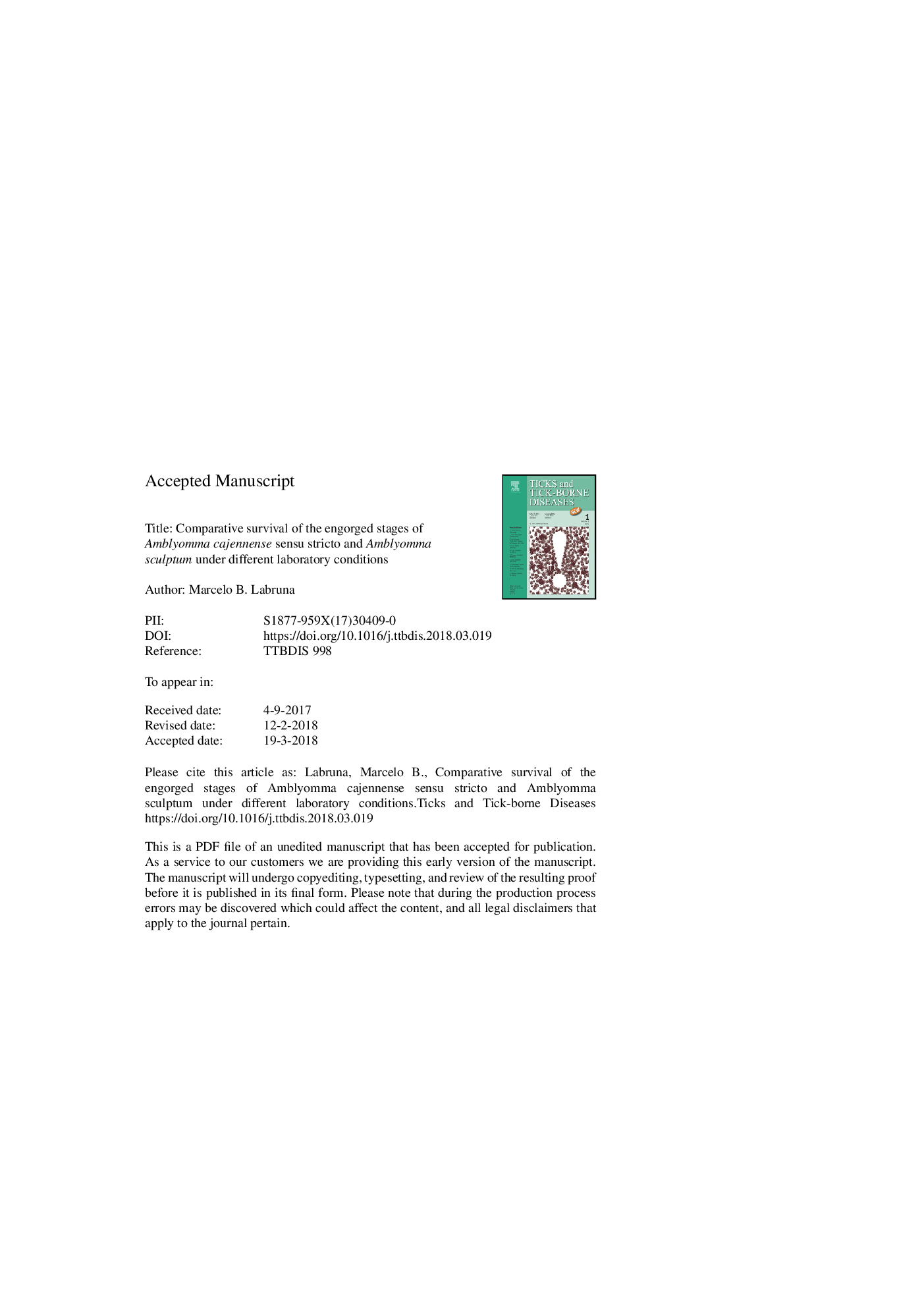| Article ID | Journal | Published Year | Pages | File Type |
|---|---|---|---|---|
| 8507318 | Ticks and Tick-borne Diseases | 2018 | 23 Pages |
Abstract
Recent studies indicated that the taxon Amblyomma cajennense (Fabricius, 1787) is a complex of 6 valid species, of which only two, Amblyomma cajennense sensu stricto (s.s.) and Amblyomma sculptum Berlese, 1888 are present in Brazil; the former species is found exclusively in areas of the Amazon biome, and A. sculptum mostly in the Cerrado biome. Populations of A. cajennense s.s. and A. sculptum are usually sustained by the same host species, and are found in many areas with similar temperature and photoperiod regimens. On the other hand, differences in the rainfall regimen and vegetation cover of the Amazon and Cerrado biomes, reflecting different vapor saturation deficit of atmosphere in the soil, could be primary factors driving the geographical distribution of the two species. In this study, all developmental stages in the life cycle of A. cajennense s.s. and A. sculptum were exposed to different temperature, photoperiod, and relative humidity (65, 78 or 100%) regimens that simulated mean conditions during summer or winter of one area of the Amazon and one area of the Cerrado in Brazil. Ticks were also exposed to water immersion during different periods of time (24, 48, or 72â¯h). Our experiments showed that A. sculptum showed significantly higher molting success for engorged larvae and oviposition success for engorged females than A. cajennense s.s. when these engorged ticks were incubated at higher saturation deficit conditions (65 and/or 78% RH with summer and winter mean temperatures). On the other hand, when ticks were immersed in water for 24, 48 or 72â¯h, there was a clear tendency for engorged stages (larvae, nymphs or females) of A. cajennense s.s. to have greater molting or oviposition success than A. sculptum. These results indicate that engorged stages of A. sculptum showed a greater capacity to survive under higher saturation deficit conditions (lower RH values associated with mean summer and winter temperatures), and engorged stages of A. cajennense s.s. had a greater capacity to survive under the highest moisture conditions, namely immersed in water for a relatively short period (24-72â¯h). When applied to the natural distributions of A. cajennense s.s. and A. sculptum in Brazil, we can infer that the former species is more adapted to the humid conditions of the Amazon biome, where the soil inside forests is quite moist throughout the year, and often swampy or flooded during the raining season. On the other hand, immature stages of A. sculptum are more adapted to the drought period of the Cerrado biome, when higher saturation deficit conditions prevail on the soil.
Keywords
Related Topics
Life Sciences
Agricultural and Biological Sciences
Animal Science and Zoology
Authors
Marcelo B. Labruna,
